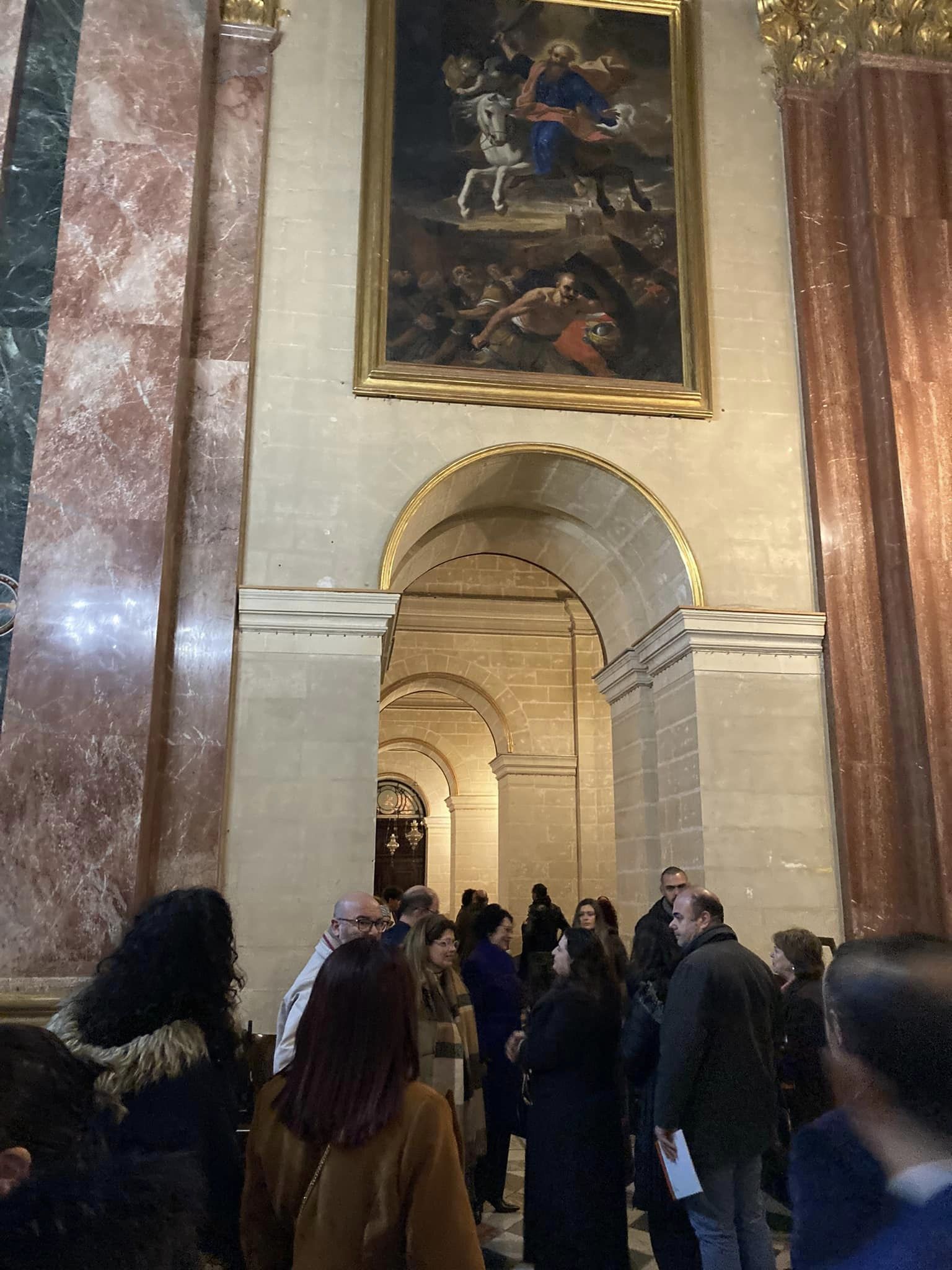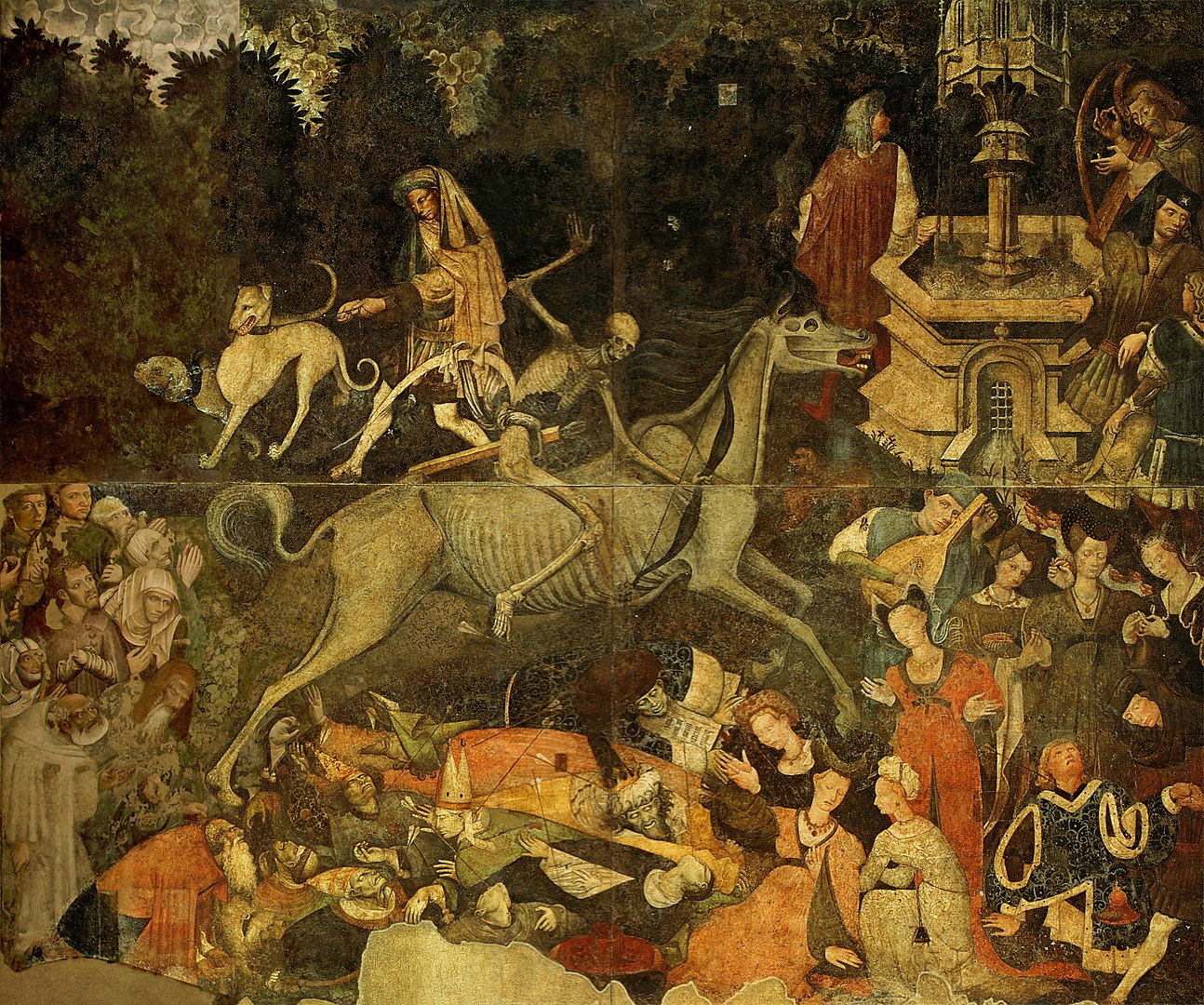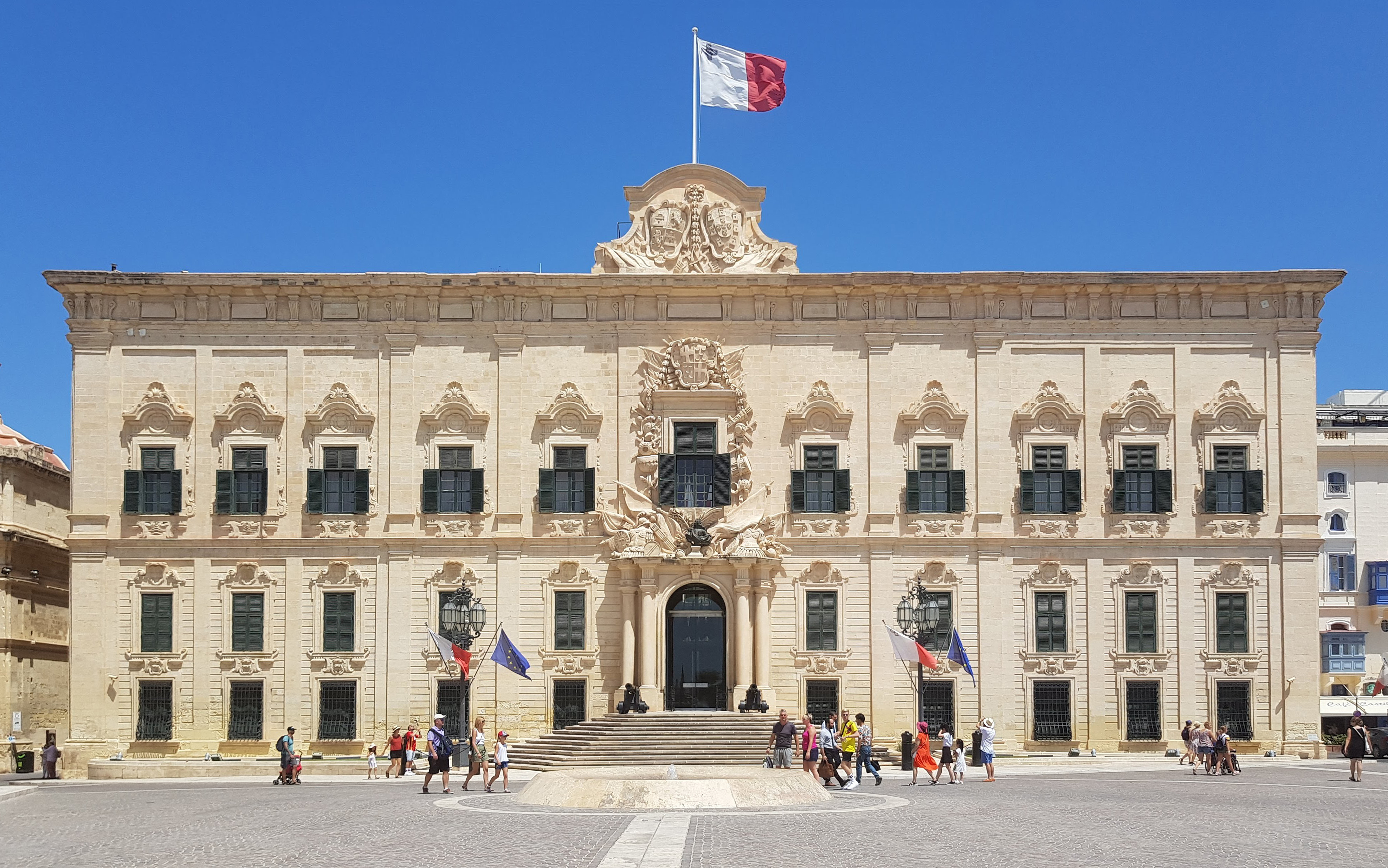Late Medieval Malta (1091-1530) & Knights of St John
Learning from the Lecture Siege of Malta 1429 & The Art Collections of the Order of St John, authored by Dr Theresa Vella Art, Education, Symbols and Signs, defaultby Nataša Pantović
Yesterday I visited Mdina Cathedral, to listen to a talk of Prof Adrian Mario Gellel from the Faculty of Education from University of Malta about a symbols Literacy project his Department is conducting with year one pupils of Primary Schools in Malta.
The five year old explored the themes provided by the 16th Century painting of Mattio Preti in Mdina Cathedral.
The idea behind the project is to allow the painting to come to life through symbols.

Public Lecture 1493 Mdina Siege the 16th Century painting of Mattio Preti in Mdina Cathedral
Malta Micro and Macro Historical Dynamics
Standing mid-way between the western and eastern halves of the Mediterranean world with Sicily and Tunis 100 miles away, the place has a favourable position for multicultural interaction. A part of the Eastern Roman Empire or the Byzantines (sixth to ninth century, by 600 AC the island had a bishop subject to Syracuse), Musilim emirate (ninth to eleventh), Latin Christian Kingdom (11th to 13th cemtury) and Catalan-Aragonese affiliate (13th to 16th century). Malta boast a variaty of cultural experiences across two major divides: Muslim-Christian and Latin-Greek. Both Salini Bay cemeterial complex and St Paul’s Catacombs are Byzantine oratories. The basilica construction with a Christian baptistery, discovered at Tas-Silg was built on the site of an ancient Greek religious complex.
In September of 1429, the population of the island was 10,000 to 12,000 with 4,000 able to fight with just two main fortifications: Fort St Angelo and the Mdina bastions.
It is recorded that the soldiers were called “Guardia”, who used to guard the shores, and the “Dejma”, who used to guard the villages.
The Egyptian chronicler wrote that the Lord of Tunis sent a fleet with 200 horses and 15,000 fighters to Sicily where they took the town of Mazara and they moved on to Mdina (Malta) which they kept besieging. After they took 3000 people into slavery the siege was lifted.

The Triumph of Death Sicilian National Gallery, Palermo, the figure of death rules the horse of Apocalypse.
Mid-14th century Sicily was a troubled land and its story is often described in apocalyptical term. The plague which struck in 1347 would recur periodically and once proud bishops and clergymen are crushed by the massacre of disease.
The Black Death ravaged much of Europe, North Africa and Levant. Divided into rival “Catalan” and “Latin” faction, the major families land-owners transformed Sicily into an open battlefield.
The Black Death first struck Europe reaching Sicily in 1347 and 1351. Catalan merchants were highly active along the shores of North Africa, where they established trading communities. At the end of 1360, both Frederick IV (Sicily ruler) and the Catalans (based in Greece) had appointed their-own Counts of Malta. In the meantime, the Arab historian al-Himyari remarked that Malta was Muslim, and it has harbours set up for ships. Was left uninhabited after 255, but it was visited by shipbuilders for its trees (the pine), by the fishermen for the abundance of fish, and by those who collect honey.
Late Medieval Malta (1091-1530)
In 1361, seven grants in the Maltese Islands were recorded, a huge estate with three water sources, villas with enclosed gardens, land of were given as royal properties as presents to knights for their millitary service. To assert his presence, it has been recorded that in April 1366, Frederick IV (Sicilian King) was in Malta. An official receipt from the 14th century, illustrates that 3000 florins were landed to the King. A royal counciler and galley captain Pellegrino landed this money to earn the jurisdiction as captain of the Island. He got the tax immune status, and with this gesture he bought his and his son the rights of Syracusan citizen.
At the time, the Maltese Universty presented a protest against local tax in agricultural products. These documents illustrate a fully-flegged local government, royal councillors, judges and other government appointees. A royal chaplaincy was bestowed on the local priest who had received three royal pays. Malta was semi-autonomous, growing cotton and textile manifecturing.
The comunity was dependent on agriculture and poor.
Two hundred years later the Knights of St John have arrived to the Maltese islands
With the population of 15,000, 20,000 have arrived, the 700 knights and 8,000 soldiers, the rest were servents and slaves. The Knights were led by a Grand Master as the head of the order.
The Art Collections of the Order of St John, authored by Dr Theresa Vella
A homeless Order of St John, the lost Levantine base of Rhodes, or the Hospitallers landed in the Island that had severe shortage of water and the soil was shallow and stony, its animal dung was the major source of fuel.
It was a medieval military order in charge of hospitals. It was headquartered in the Kingdom of Jerusalem until 1291, part of the Byzantine empire, on the island of Cyprus from 1302 until 1310, on the island of Rhodes from 1310 until 1522, in Malta from 1530 until 1798 and at Saint Petersburg from 1799 until 1801.
Early in the 11th century, merchants from Amalfi founded a hospital in Jerusalem, dedicated to John the Baptist, to provide care for sick, poor, or injured pilgrims to the Holy Land. After the conquest of Jerusalem in 1099 during the First Crusade, a group of Crusaders formed a religious order to support the hospital. The organization became a military religious order under its own papal charter.
Many of the more substantial Christian fortifications in the Holy Land were built by the Templars and the Hospitallers. At the height of the Kingdom of Jerusalem, the Hospitallers held seven great forts and 140 other estates in the area.
After the fall of the Kingdom of Jerusalem in 1291, the order sought refuge in the Kingdom of Cyprus. Finding themselves becoming enmeshed in Cypriot politics, their Master, Guillaume de Villaret, created a plan of acquiring their own temporal domain, selecting Rhodes to be their new home,
The Templars, another order, managed many businesses, within the Templar network, employed many workers at their farms.
The orders were not subject to local government, making them everywhere a "state within a state" with its own army, passing freely through all borders. No tax has created tensions with some European nobility. The Templars were indicating an interest in founding their own monastic state.
In 1305, the new Pope Clement V, based in Avignon, France, sent letters to both Grand Masters to discuss the possibility of merging the two orders. Neither was amenable to the idea. According to some historians, King Philip, began pressuring the church to take action against the order, as a way of freeing himself from his debts.
At dawn on Friday, 13 October 1307 King Philip IV ordered French Templars to be simultaneously arrested and killed.
Pope Clement V dissolved the Hospitallers' rival order, the Knights Templar, in 1312 with a series of papal bulls, turned over much of their property to the Hospitallers.
Following the dissolution of the Knights Templar, the Order of Christ was erected in 1319 and absorbed many of the Knights Templar into its ranks, along with Knights Templar properties in Portugal under the protection of the Portuguese king Denis, who refused to persecute the former knights.
To begin with, they were divided into 7 exclusive national groups: Provence, Augergene, France, Italy, Germany, England, and Spain. They received the Maltese Islands in a perpetual lease in 1530 from Charles I of Spain in exchange for the promise of one Maltese falcon a year.
In 1523 they were forced from Rhodes by the Sultan's forces and settled in Malta, which they ruled until they were dislodged by Napoleon's army in 1798. The order settled in Rome in the mid-19th century, where it remains to this day.
LTER, The holdings were organised into eight "Tongues" or Langues, one each in Crown of Aragon, Auvergne, Crown of Castile, Kingdom of England, France, Holy Roman Empire, Italy and Provence. Each was administered by a Prior or, if there was more than one priory in the langue, by a Grand Prior.
At Rhodes, and later Malta, the resident knights of each langue were headed by a bailiff.
The English Grand Prior acquired the estates allocated to the English langue from 1330 to 1358.
They withstood two invasions in the 15th century, one by the Sultan of Egypt in 1444 and another by the Ottoman Sultan in 1480 who, after capturing Constantinople and defeating the Byzantine Empire in 1453, made the Knights a priority target.
In 1522, an entirely new sort of force arrived: 400 ships 100,000 men to the island. Against this force the Knights, had about 7,000 men-at-arms and their fortifications. The siege lasted six months, at the end of which the surviving defeated Hospitallers were allowed to withdraw to Sicily..
The Hospitallers also continued their maritime actions against the Muslims and especially the Barbary pirates. Although they had only a few ships they quickly drew the ire of the Ottomans, who were unhappy to see the order resettled. In 1565 Suleiman sent an invasion force of about 40,000 men to besiege the 700 knights and 8,000 soldiers and expel them from Malta.
This is known as the Great Siege of Malta.
Most of the cities were destroyed and about half the knights killed. When his council suggested the abandonment of Birgu and Senglea and withdrawal to Fort St. Angelo, Grand Master Jean Parisot de Valette refused.
The Viceroy of Sicily had not sent help. A wrong decision could mean defeat and exposing Sicily and Naples to the Ottomans. He had left his own son with La Valette.
With the exception of Fort Saint Elmo, the fortifications were still intact. Many of the Ottoman troops had fallen ill over the terrible summer months. Ammunition and food were running short. Ottomans heard of the arrival of Sicilian reinforcements in Mellieħa Bay. Unaware that the force was very small, they broke off the siege and left on 8 September.
When the Ottomans departed, the Hospitallers had but 600 men able to bear arms. The Ottoman army at its height had some 40,000 men, of whom 15,000 eventually returned to Constantinople.
After the siege a new city had to be built: the present capital city of Malta, named Valletta in memory of the Grand Master who had withstood the siege.
In 1630, the Grand Master was awarded equality with cardinals.
The knights turned to policing the Mediterranean from the pirates operating from the North African coastline. The knights set about protecting Christian merchant ships and raiding Muslim ships More and more ships were plundered, from whose profits many knights lived idly and luxuriously.
For a time, the Order even possessed a German langue which was part Protestant or Evangelical and part Roman Catholic.
The biggest paradox is the fact that for many years the Kingdom of France remained on amicable terms with the Ottoman Empire, the Knights' greatest and bitterest foe and purported sole purpose for existence. Paris signed many trade agreements with the Ottomans and agreed to an informal (and ultimately ineffective) cease-fire between the two states during this period. The shift in attitudes of the Knights over this period is ably outlined by Paul Lacroix who states:
"Inflated with wealth, laden with privileges which gave them almost sovereign powers ... the order at last became so demoralised by luxury and idleness that it forgot the aim for which it was founded, and gave itself up for the love of gain and thirst for pleasure. Its covetousness and pride soon became boundless. The Knights pretended that they were above the reach of crowned heads: they seized and pillaged without concern of the property of both infidels and Christians."
In February 1641 a letter sent to Louis XIV of France, reads:
“Italy provides us with nothing much; Bohemia and Germany hardly anything, and England and the Netherlands for a long time now nothing at all. We only have something to keep us going, Sire, in your own Kingdom and in Spain.”
Despite their vows of poverty, the Knights were granted the ability to keep a portion of the prize money and cargo gained from a captured ships.
The Order stop all ships suspected to carry Turkish goods and confiscate the cargo to be re sold in Valletta, along with the ship's crew, as slaves. The authorities in Malta established a judicial court, where captains who felt wronged could plead their case, often successfully. Yet these efforts were not altogether successful, as the Consiglio del Mer received numerous complaints around the year 1700 of Maltese piracy in the region.

Auberge de Castille in Valletta, an example of 18th-century Baroque architecture built by the Order.
The knights stayed for 268 years, transforming the island building its capital city Valletta.
Most Knights were French and excluded the native islanders from important positions. The Maltese were excluded from serving in the order.
French soon supplanted Italian as the official language though the native inhabitants continued to speak Maltese among themselves. The knights also constructed fortresses, watch towers, and churches. The island's hospitals were expanded as well. The Public Library was established in 1761. The University was founded in 1786.
Both in Birgu (1530–1571) and Valletta (from 1571) the knights had built housing in auberges (inns) segregated by their Nationalities.
Valletta still has the auberges of Castille, Italy, Aragon, Bavaria and Provence (now National Museum of Archaeology). In the Second World War, the auberge d'Auvergne and the auberge de France was destroyed.
In 1604, each Langue (Nationality or Country) was given a chapel inside the Cathedral of Saint John and each has decorated their own walls and ceiling. During Christmas or Eastern each would have had their own mass celebrated by own priests.
The order is considered a sovereign entity under international law. It prints its own postage stamps and coins. The Knights maintain diplomatic relations with 104 countries.






Late Medieval Malta (1091-1530) & Knights of St John No comments on Late Medieval Malta (1091-1530) & Knights of St John: